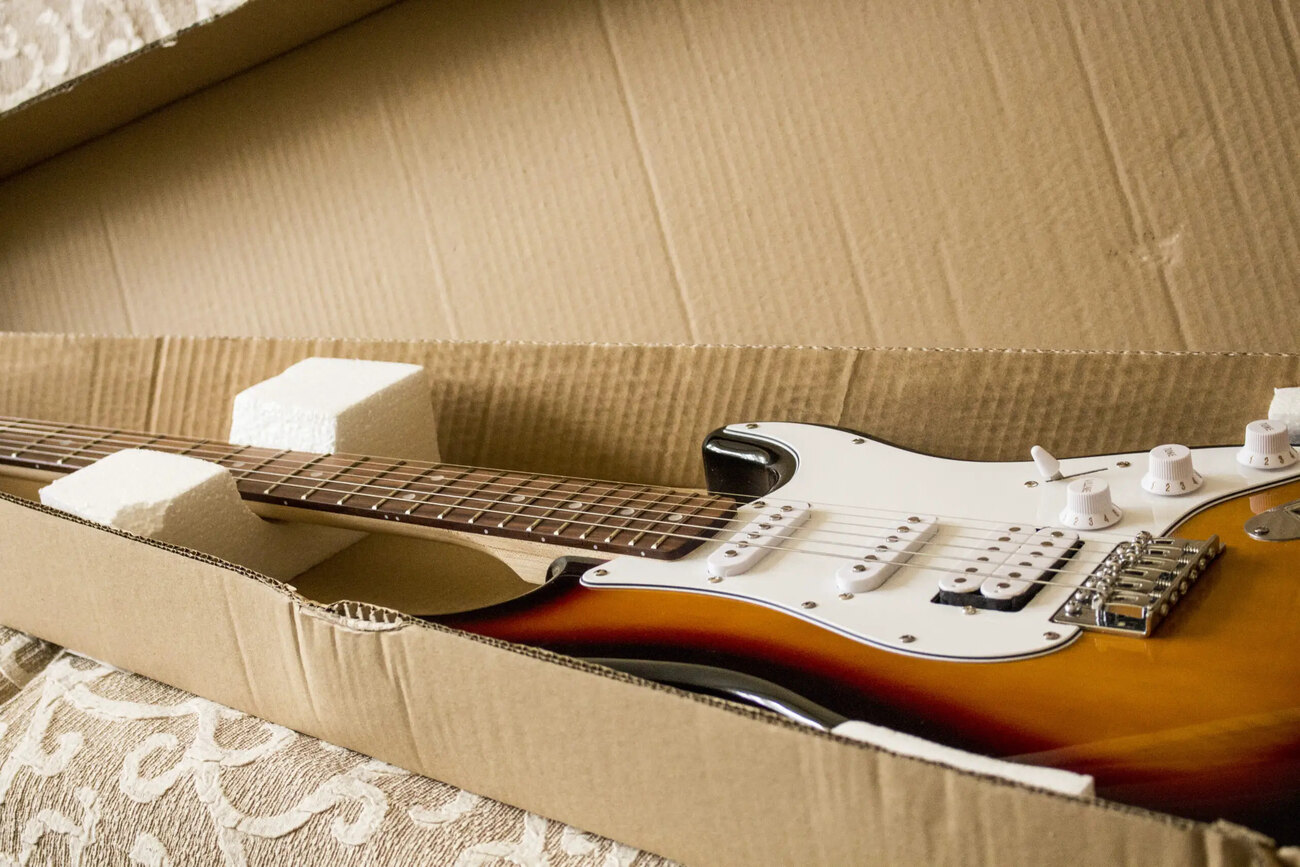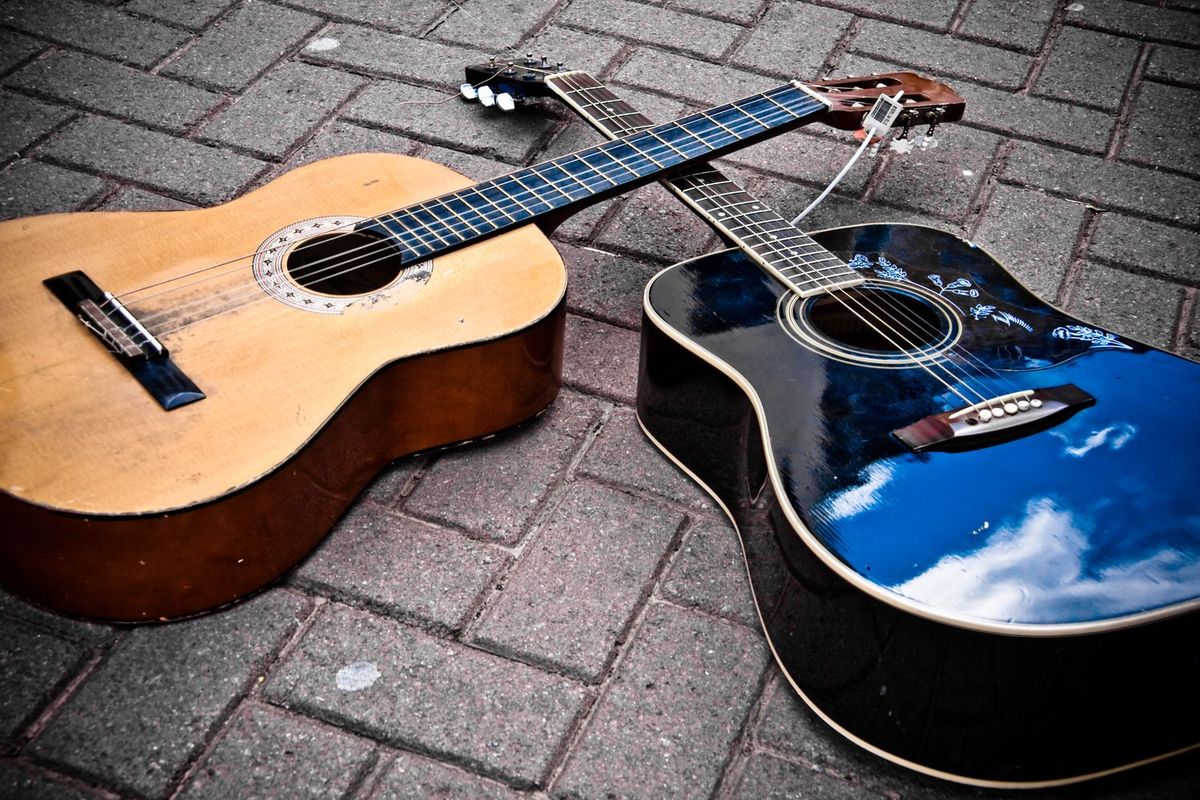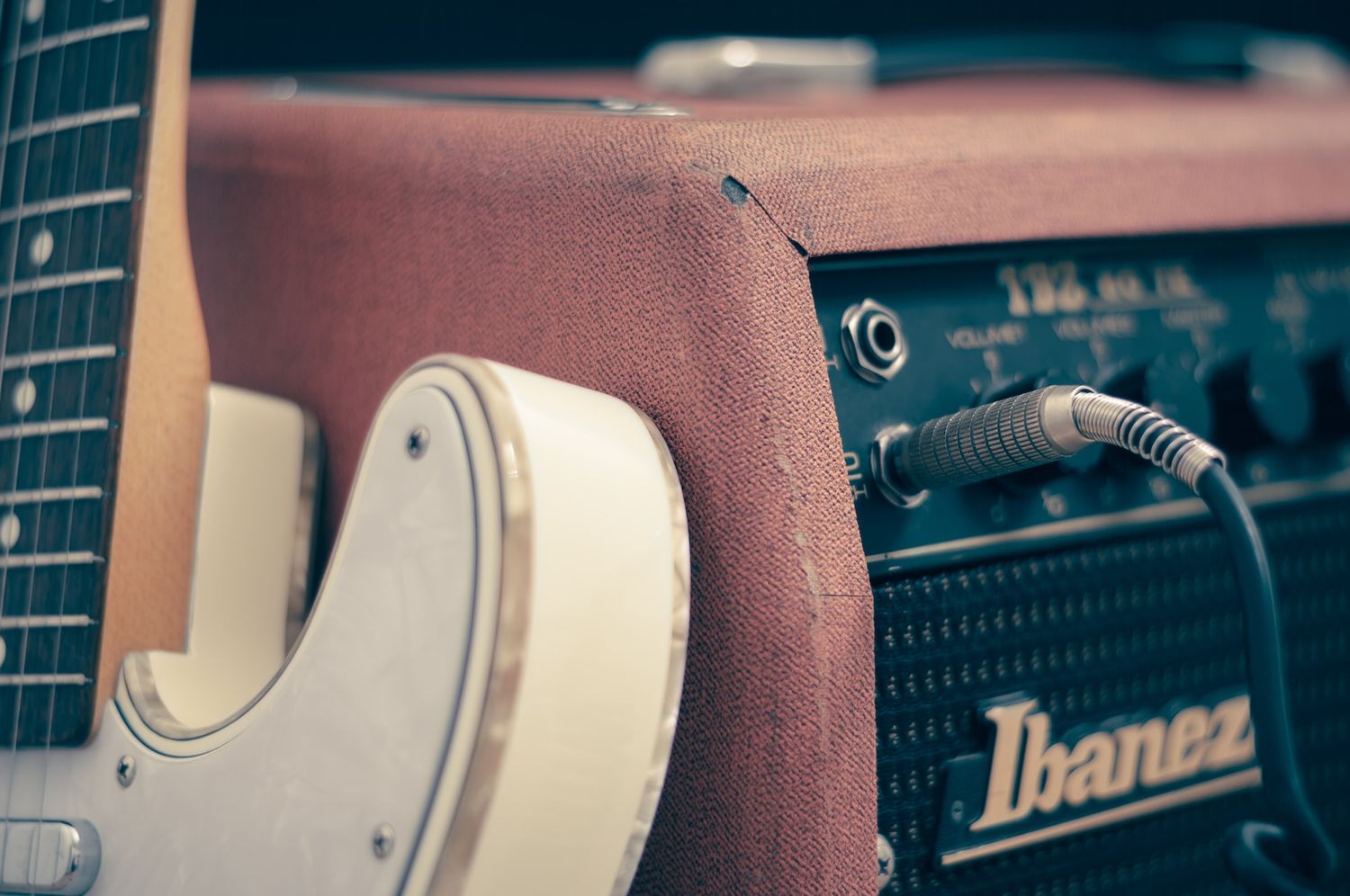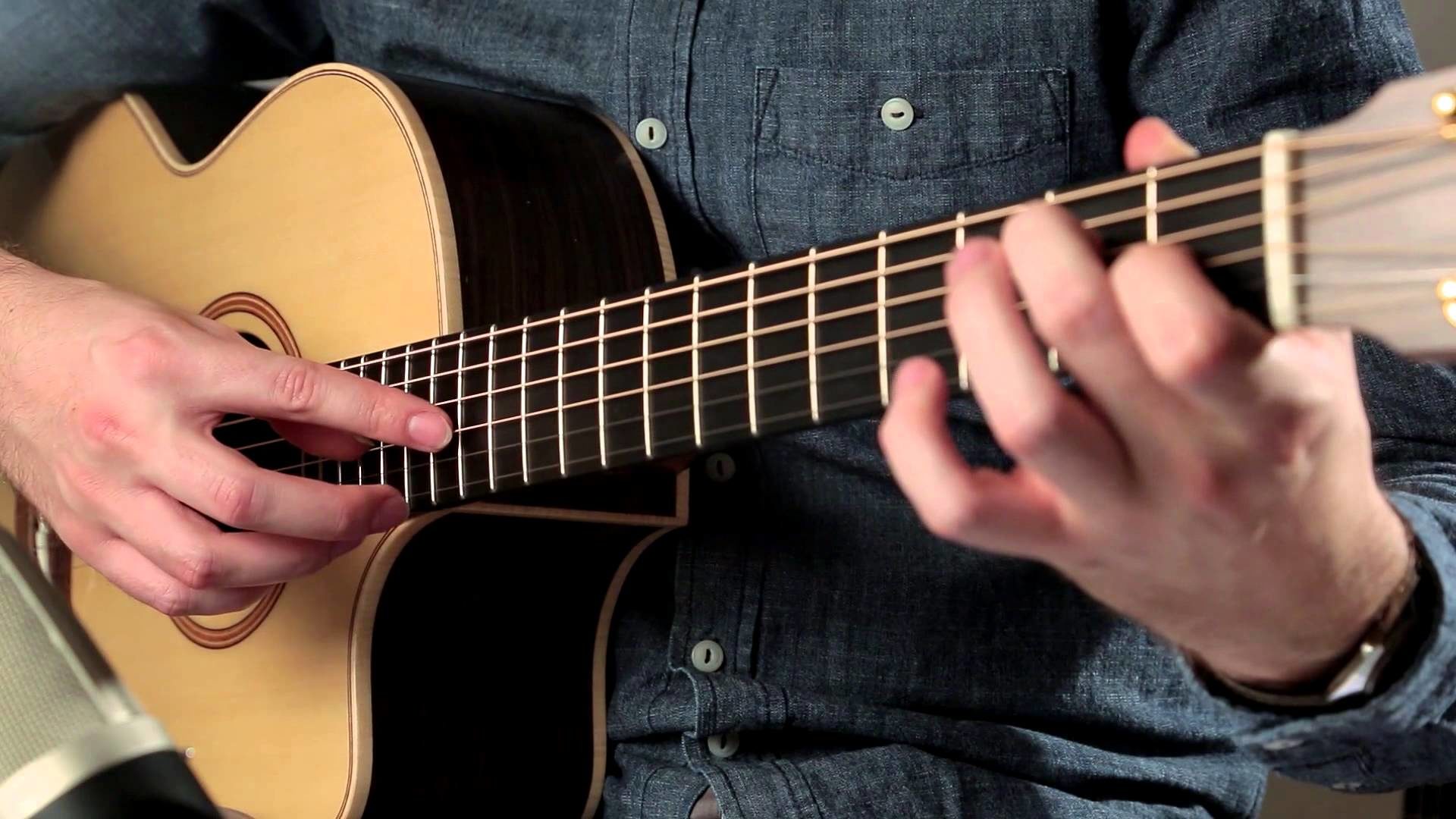Home>Instruments>Guitar>How To Bring A Guitar On A Plane


Guitar
How To Bring A Guitar On A Plane
Published: February 12, 2024
Learn the best tips for bringing your guitar on a plane hassle-free. Find out the rules, regulations, and practical advice for traveling with your instrument.
(Many of the links in this article redirect to a specific reviewed product. Your purchase of these products through affiliate links helps to generate commission for AudioLover.com, at no extra cost. Learn more)
Table of Contents
Introduction
Bringing your beloved guitar on a plane can be a nerve-wracking experience, but with the right preparation and knowledge, it can be a smooth and stress-free process. Whether you're a touring musician, a dedicated hobbyist, or simply want to have your instrument with you on your travels, understanding the ins and outs of traveling with a guitar is essential.
Guitars hold significant sentimental and monetary value, making it crucial to ensure their safety and security during air travel. From checking airline policies to selecting the appropriate case and communicating effectively with airport staff, there are various considerations to keep in mind. This comprehensive guide will walk you through the essential steps to bring your guitar on a plane with confidence and peace of mind.
Traveling with a guitar opens up opportunities to share your music with new audiences, collaborate with fellow musicians, or simply enjoy the comfort of having your instrument by your side. However, navigating the logistics of air travel with a guitar requires careful planning and attention to detail. By following the advice outlined in this article, you can embark on your journey knowing that your guitar is well-protected and ready to accompany you on your musical adventures.
Check Airline Policies
Before you head to the airport with your guitar, it’s crucial to familiarize yourself with the specific policies and regulations of the airline you’ll be traveling with. Each airline may have its own set of guidelines regarding the transportation of musical instruments, including guitars. These policies can vary in terms of allowed dimensions, additional fees, and specific instructions for packing and storing your instrument.
Start by visiting the airline’s official website or contacting their customer service to inquire about their policies related to carrying musical instruments as carry-on or checked baggage. Some airlines may allow you to bring your guitar into the cabin as a carry-on item, while others may require it to be checked as baggage. Understanding these details in advance will help you avoid any last-minute surprises or complications at the airport.
Additionally, familiarize yourself with any relevant security regulations imposed by the Transportation Security Administration (TSA) or the aviation authorities in your country. These regulations may impact how you pack and transport your guitar through security checkpoints and onto the aircraft. Being well-informed about the rules and procedures will enable you to prepare accordingly and ensure a smooth experience at the airport.
Keep in mind that airline policies and security measures can change, so it’s advisable to double-check the information closer to your travel date. By staying informed and proactive, you can navigate the airline policies with confidence and take the necessary steps to safeguard your guitar throughout the journey.
Choose the Right Case
When preparing to bring your guitar on a plane, selecting the appropriate case is a critical decision that directly impacts the safety and security of your instrument. The ideal case should provide a balance of protection, portability, and compliance with airline regulations. Here are key factors to consider when choosing a case for air travel:
- Hard Case vs. Gig Bag: While gig bags offer lightweight and convenient options for local travel, a hard case provides superior protection for air travel. Opt for a hard case constructed from durable materials such as ABS plastic or fiberglass, featuring secure latches and a plush interior to cushion the instrument.
- Size and Dimensions: Ensure that the case dimensions comply with the airline’s guidelines for carry-on or checked baggage. For carry-on purposes, the case should fit within the specified size limits to qualify as a personal item or overhead bin storage.
- Climate Control: If you’re traveling to regions with varying climates, consider a case with built-in humidity control to protect the guitar from temperature and humidity fluctuations during the flight and upon arrival.
- Customization and Identification: Personalize your case with distinctive markings or tags to make it easily identifiable among other luggage. This can aid in preventing mix-ups and ensuring that your guitar receives proper handling.
Investing in a high-quality case tailored to your guitar’s dimensions and your travel needs is a worthwhile step in safeguarding your instrument from potential damage or mishandling. By prioritizing protection and compliance with airline requirements, you can embark on your journey with peace of mind, knowing that your guitar is well-secured in a reliable case.
Pack Your Guitar Properly
Properly packing your guitar is essential to ensure its safety and integrity during air travel. Follow these guidelines to pack your guitar effectively for the journey:
- Loosen the Strings: To relieve tension on the neck and minimize the risk of damage from changes in air pressure, slightly loosen the guitar strings before placing it in the case.
- Add Cushioning: Use soft padding, such as bubble wrap or foam, to provide extra cushioning inside the case, particularly around the headstock, body, and neck of the guitar. This helps absorb any impact during handling and transit.
- Secure Accessories: If your guitar has detachable accessories such as a strap or capo, secure them within the case to prevent them from shifting and potentially causing damage to the instrument.
- Protect the Neck and Headstock: Place additional padding around the neck and headstock to guard against any jostling or impact that may occur while the case is in transit.
- Document the Contents: Consider placing a note inside the case with your contact information and a brief description of the guitar. In the rare event of the case getting separated from the guitar, this can facilitate its identification and return to you.
By taking these precautions and packing your guitar with care, you can minimize the risk of damage and ensure that it arrives at your destination in the same condition as when it departed. Attention to detail during the packing process is instrumental in preserving the structural integrity and playability of your guitar throughout the journey.
Arrive Early and Communicate with Airport Staff
On the day of your flight, it’s essential to arrive at the airport well in advance, especially when traveling with a guitar. Arriving early allows ample time to navigate any potential challenges and ensures that you have sufficient opportunity to communicate with airport staff regarding your instrument.
When checking in for your flight, politely inform the airline staff that you are traveling with a guitar. This proactive communication serves two important purposes: it allows the staff to provide guidance on the specific procedures for transporting the guitar, and it helps ensure that the instrument receives proper handling and storage throughout the journey.
If you are carrying the guitar as a carry-on item, inquire about the possibility of pre-boarding to secure adequate space in the overhead bins for your instrument. Pre-boarding can offer the advantage of stowing the guitar securely before the cabin fills up with other passengers’ belongings, reducing the risk of overcrowding and potential damage to the instrument.
For checked baggage, confirm with the staff that the guitar will be handled with care and labeled appropriately to indicate its fragile nature. It’s advisable to request a “fragile” tag for the case to alert baggage handlers to exercise caution when loading and unloading the guitar, minimizing the chances of rough treatment during transit.
By arriving early and engaging in open communication with airport personnel, you demonstrate a proactive approach to ensuring the safe and respectful handling of your guitar. This collaborative effort fosters a smoother travel experience and reinforces the importance of safeguarding your instrument throughout its journey in the air travel environment.
Store Your Guitar in the Overhead Bin
When bringing your guitar on a plane as a carry-on item, securing proper storage in the overhead bin is crucial to its safety and protection throughout the flight. Here are essential steps to ensure the secure storage of your guitar in the overhead compartment:
- Board Early: If possible, take advantage of early boarding opportunities to ensure access to the overhead bins before they fill up with other passengers’ belongings. This allows you to select a suitable space and handle your guitar with care when stowing it.
- Positioning the Case: Place the guitar case in the overhead bin with the headstock pointing toward the back of the plane. This orientation minimizes the risk of the case shifting during the flight and provides additional protection for the neck and headstock.
- Secure the Case: Position the case securely in the overhead bin, ensuring that it does not shift or slide during takeoff, landing, or turbulence. If necessary, use additional soft items such as a jacket or scarf to provide gentle cushioning and prevent movement.
- Alert Fellow Passengers: Consider politely informing nearby passengers that you have a delicate item, such as a guitar, stored in the overhead bin. This can encourage their cooperation in handling their own belongings and reduce the likelihood of accidental impacts or disturbances to the guitar case.
- Monitor During the Flight: If feasible, periodically check on the guitar during the flight to ensure that it remains securely positioned in the overhead bin. This proactive approach allows you to address any potential issues promptly and make adjustments if needed.
By following these steps and taking proactive measures to secure and monitor your guitar in the overhead bin, you contribute to its safe passage and minimize the risk of damage or displacement during the flight. With careful attention to positioning and communication, you can travel with confidence, knowing that your guitar is well-protected in the cabin environment.
Conclusion
Bringing a guitar on a plane requires thoughtful preparation, adherence to airline policies, and clear communication with airport staff. By following the steps outlined in this guide, you can navigate the complexities of air travel with your guitar while prioritizing its safety and well-being.
From selecting a suitable case and packing the instrument with care to communicating effectively with airline personnel and securing proper storage in the overhead bin, each step plays a crucial role in ensuring a smooth and secure journey for your guitar. By arriving early and engaging in proactive communication, you establish a collaborative approach that fosters respect for your instrument’s fragility and value.
Traveling with a guitar offers the opportunity to share your music with new audiences, collaborate with fellow musicians, and maintain a sense of familiarity and comfort during your travels. With the right approach and attention to detail, you can embark on your journey with confidence, knowing that your guitar is well-protected and ready to accompany you on your musical adventures.
By prioritizing the safety and security of your guitar, you can embrace the excitement of bringing your instrument on a plane, opening doors to new musical experiences and ensuring that your cherished companion arrives at your destination in pristine condition.
Remember, each step in the process, from selecting the right case to monitoring the guitar during the flight, contributes to the overall safety and well-being of your instrument. With careful planning and a proactive mindset, you can embark on your travels with the peace of mind that your guitar is in good hands – yours.











